Dec 11, 2024
We checked out of our hotel in Sibiu and loaded up on the bus for Brasov. Along the way we made a couple of interesting and worthwhile stops. Because it is winter, the scenery on the drives is not that interesting. Our first stop was in Biertan to see the fortified Lutheran church. The late Gothic church and its surrounding Saxon-style buildings is surrounded by walls and towers sitting on a hill overlooking abandoned vineyards. The church was built in the late 15th century as a Catholic church but was soon converted to a Lutheran church around 1572 after the Reformation. There is a magnificent altarpiece with 28 painted panels, probably a holdover from its Catholic days. The complex was used as a place for the villagers to take refuge in case of an attack. There is a treasure room where they kept the village valuables – the door has an elaborate locking mechamism with 19 locks. The church is also known for its “divorce cottage” – with one room, one bed, one set of cutlery – where couples whose marriages were in trouble had to stay for up to two weeks to resolve their differences. The modern community is mostly German speakers with monthly services are still done in German. https://romaniatourism.com/castles-fortresses-romania-biertan-fortified-church.html
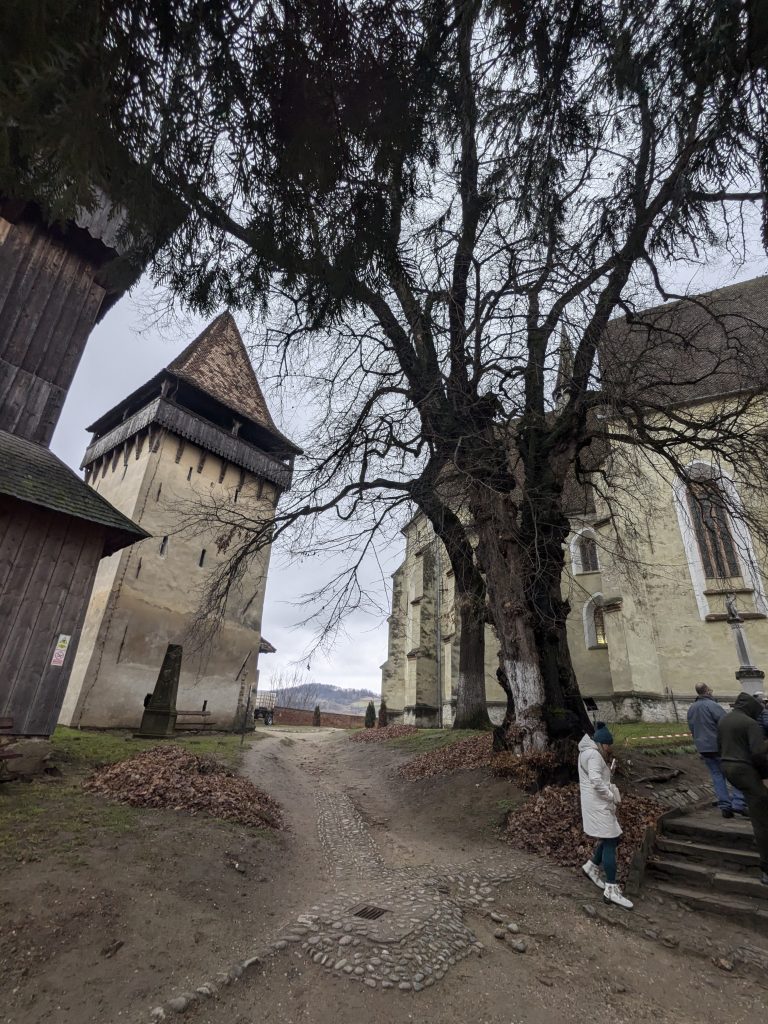
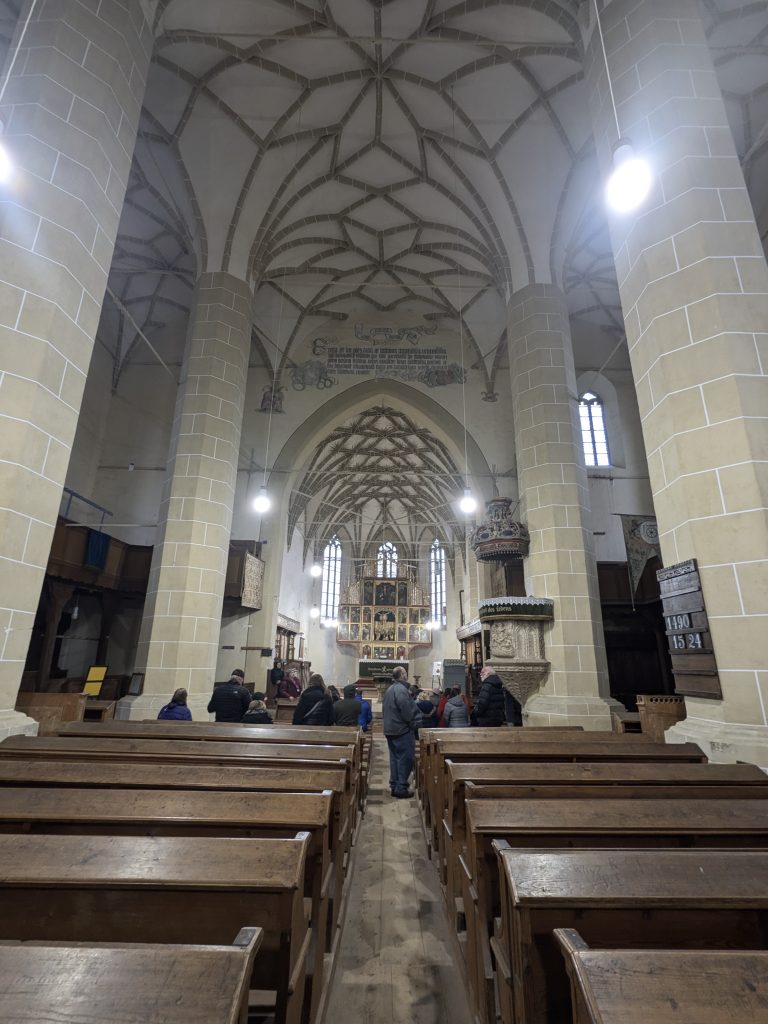
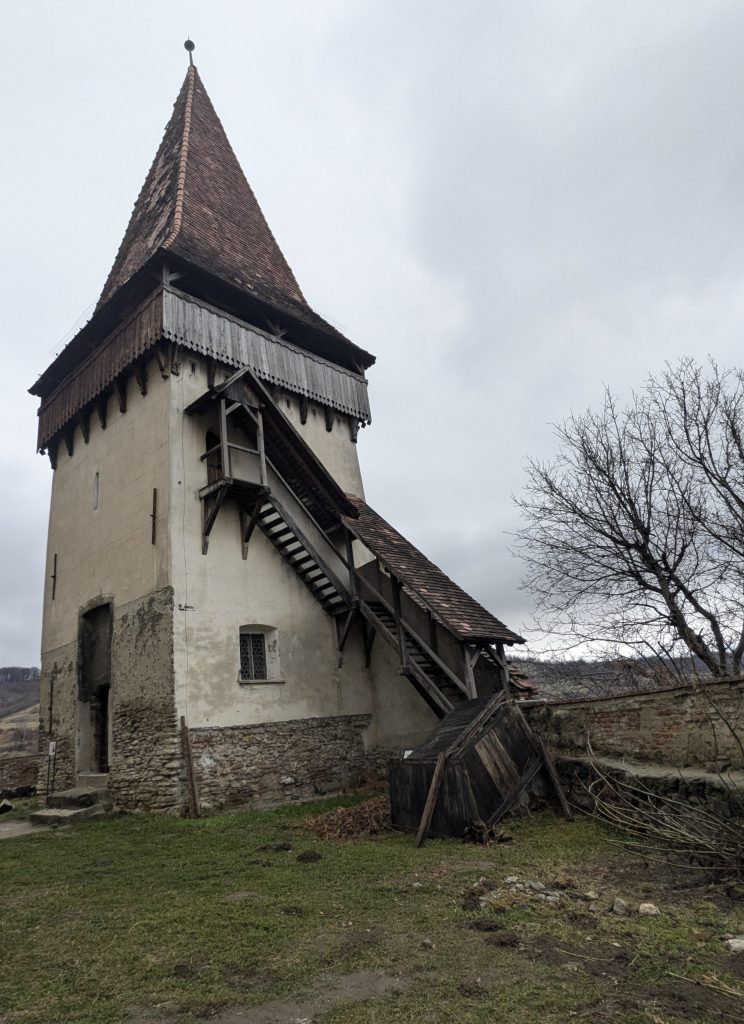
From Biertan we continued on to the village of Sighisoara, also in Transylvania. The weather all day was quite grey. This fortress town is a UNESCO protected citadel. It was settled by Saxon’s from German lands in the 12th century. It is a beautiful medieval village with much to explore. Very few cars are allowed inside the walled town. We could walk or take a tourist train from main road up to the village. Since it was a rainy day, the streets were mostly empty except for local school children. In the summer, it is a bit of a carnival. Guide gave us a short tour of Sighisoara and then treated us to a lunch at Hotel Sighisoara where we had an excellent goulash. We had some free time to shop and explore. This is another beautiful town. I could have spent more time here walking along the city walls and visiting the museums. The town is supposedly the birthplace of Vlad Tempe. I found a gift shop I had read about in Lonely Planet book, the Spoonman, where I purchased a glass painted icon. This technique of painting icons on the back of glass was started in Transylvania in the 17th century and has become a cultural tradition.
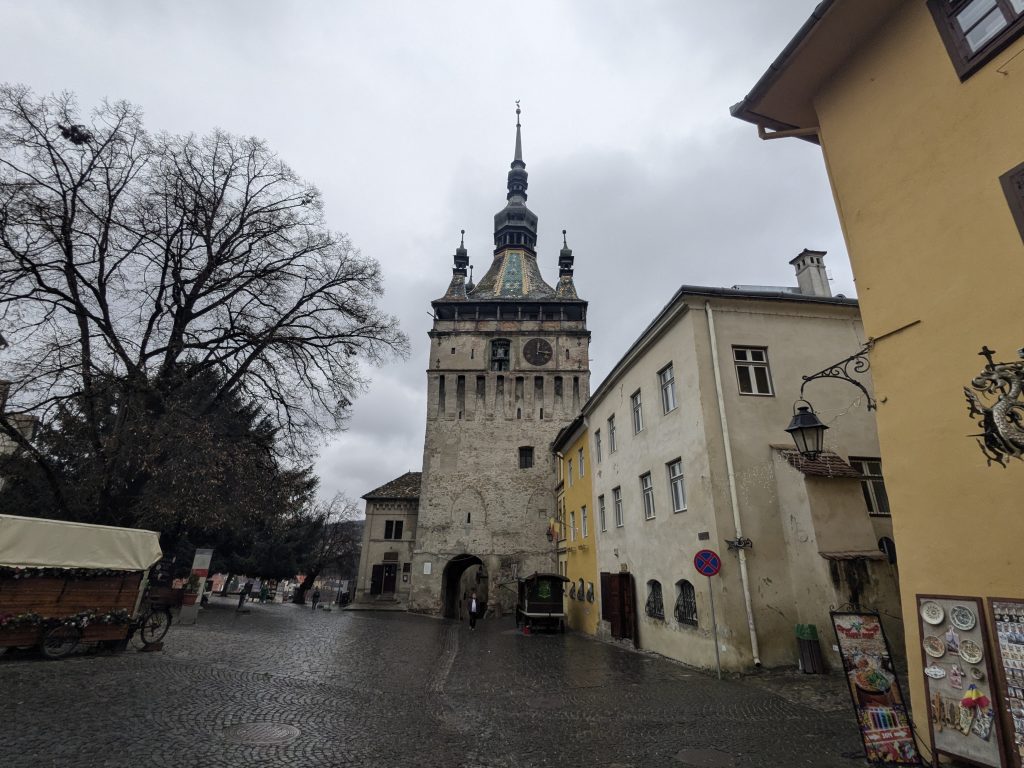
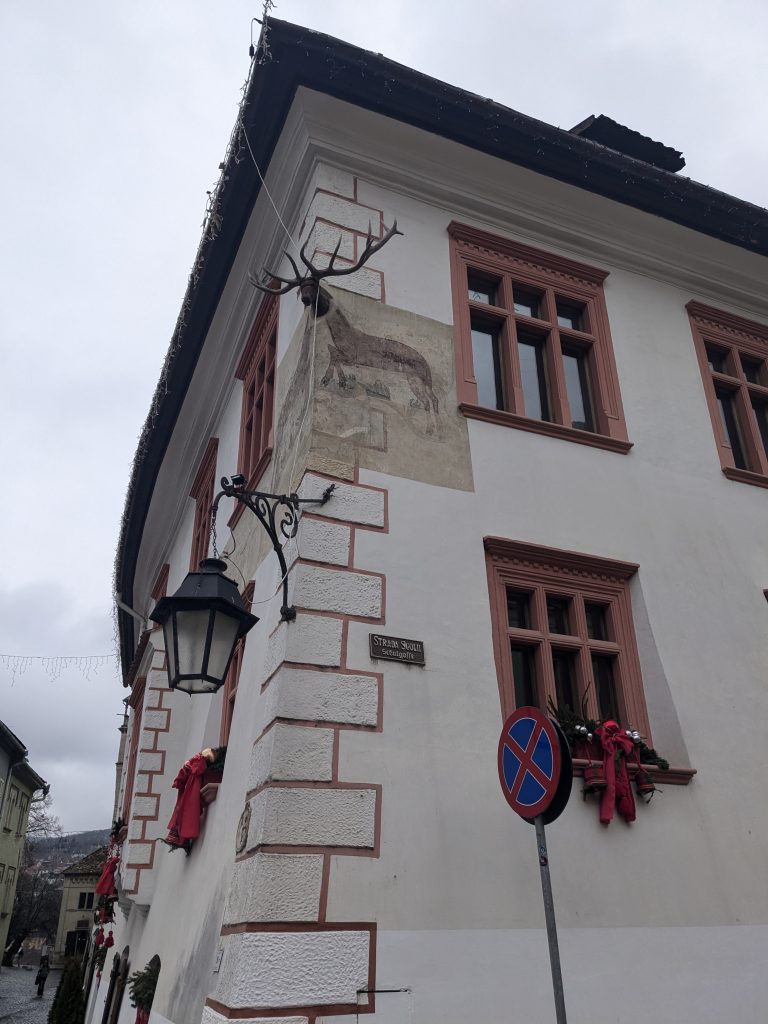
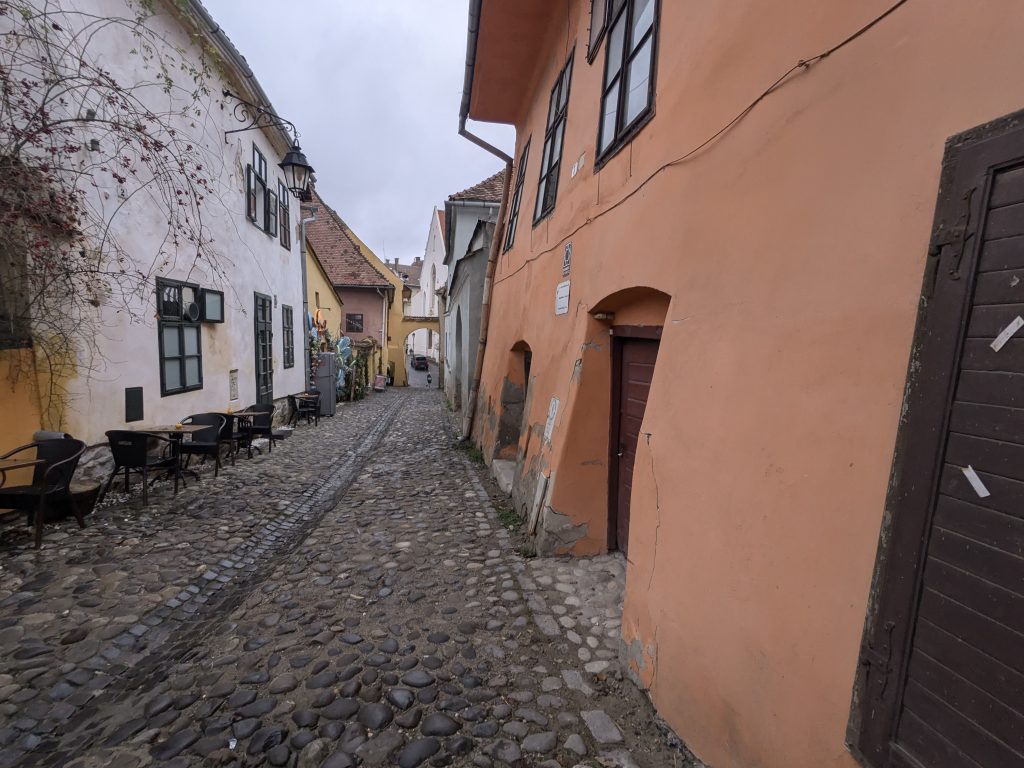
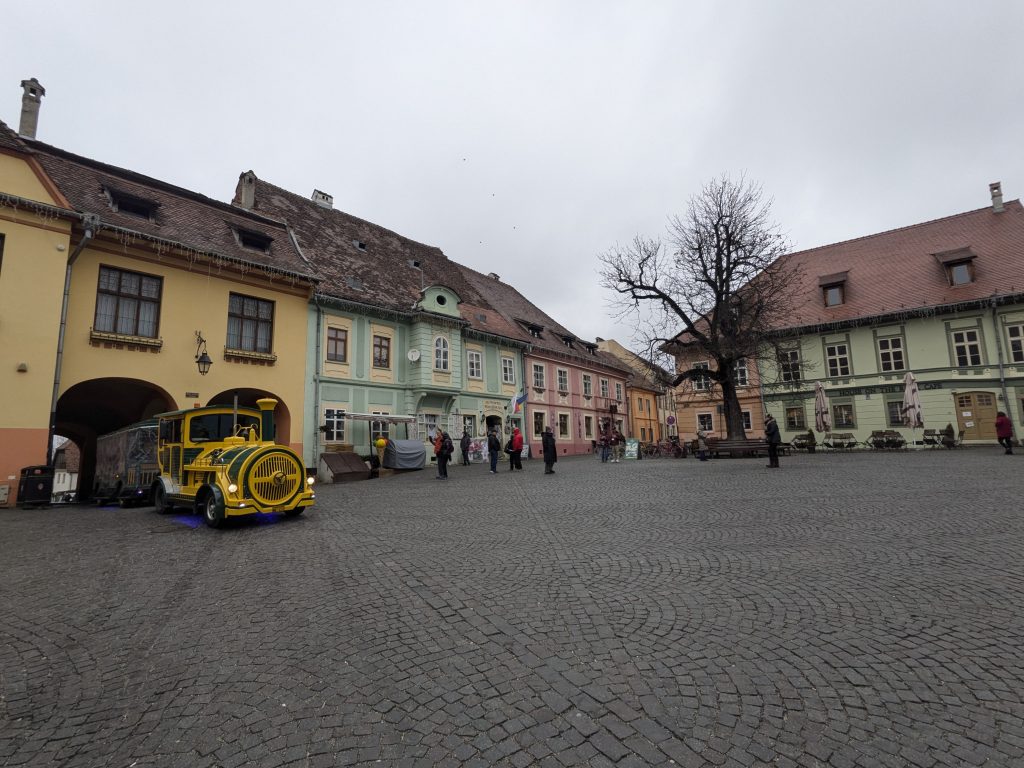
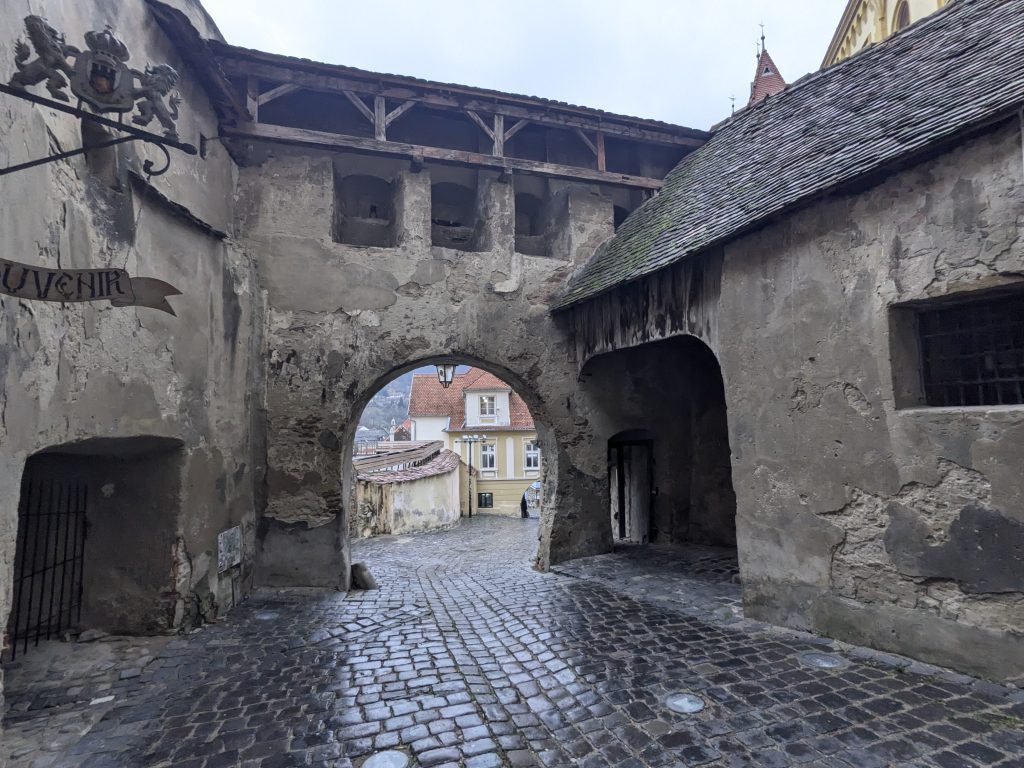
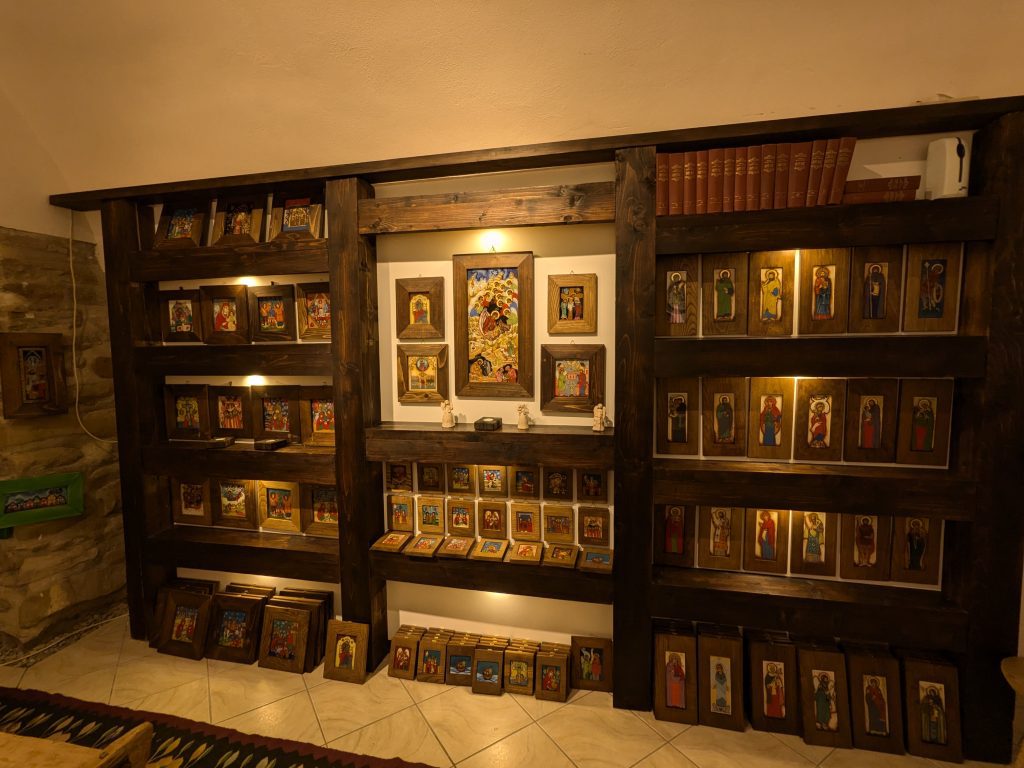
On the drive, we passed through the town of Bratieu, a village where the Roma people (aka gypsies) have settled. This community is known for its copper working and passes on this centuries-old craft through the generations. Most of the traditional homes in Romania have roofs made from tile. However, the homes in Bratieu were quite large and had decorative metal roofs. A big difference from the Roma’s early days of living as travelers. Our guide talked about the origins of this population – the term Roma doesn’t mean of Romanian descent. They actually came from India. The term gypsy was used because of their darker skin – and the Europeans thought they came from Egypt. The traditional travelers refuse to educate their children in traditional schools. The Romanian government has implemented various incentives to encourage the children to attend chool.
Our destination for the night was Brasov. The hotel we stayed at Aro Palace is in an excellent location. Our guide showed us how to get to the markets and pedestrian streets and how to get back to the hotel. I wandered the Christmas market but was not impressed with the offerings. Ended up eating at Bistro De Arte where it was warm and cozy.
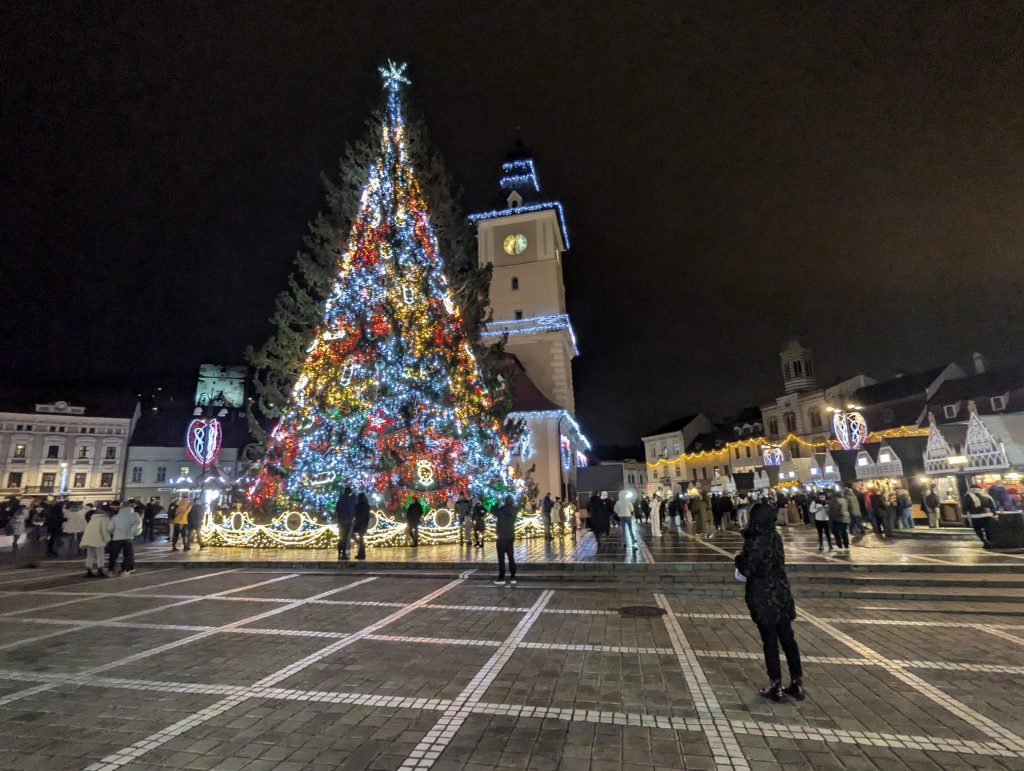
Dec 12, 2024
Thursday was a very full day based out of Brasov.
We loaded up on the bus in the morning and were the first tour group to arrive at Bran Castle. This place is known as Dracula’s castle due to Bram Stoker’s novel of the same name. There is very little to link this castle to the fictional vampire or the historical Wallachian prince, Vlad Tempe also known as Vlad the Impaler and Vlad Dracul. The Dracul means that his father belonged to the Order of the Dragon, a fraternal society. He is celebrated in Romania for eventually freeing the country from the Ottoman Empire, though he is also known for being extremely cruel to his enemies. The connection to Stoker’s novel is just marketing by the Transylvania region. The castle is a fortress and sits up on a hill, very imposing on this dreary day. It was built in the 13th century by Teutonic Knights, was then held for several centuries by the Brasov Saxons. It was not until after WWI that the Romanian monarchy took posession of the castle. It was a favorite of Queen Marie, wife of King Ferdinand. The interior was quite modern with all of the stone interior walls covered in white plaster by the Queen and the rooms decorated in 19th century antiques. We had a corny guide, dressed in black really playing to the vampire theme. Just below the castle is a restaurant built by Marie to receive guests. I had a nice hot bowl of soup and a flat white coffee while waiting for the tour group to reconvene.
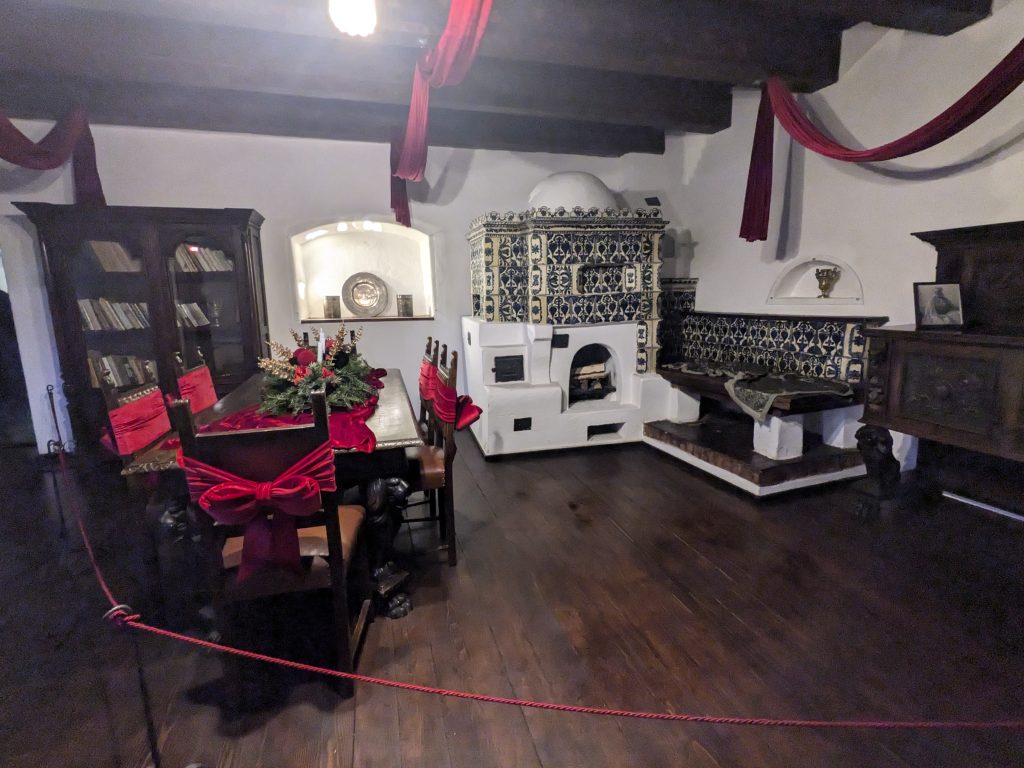
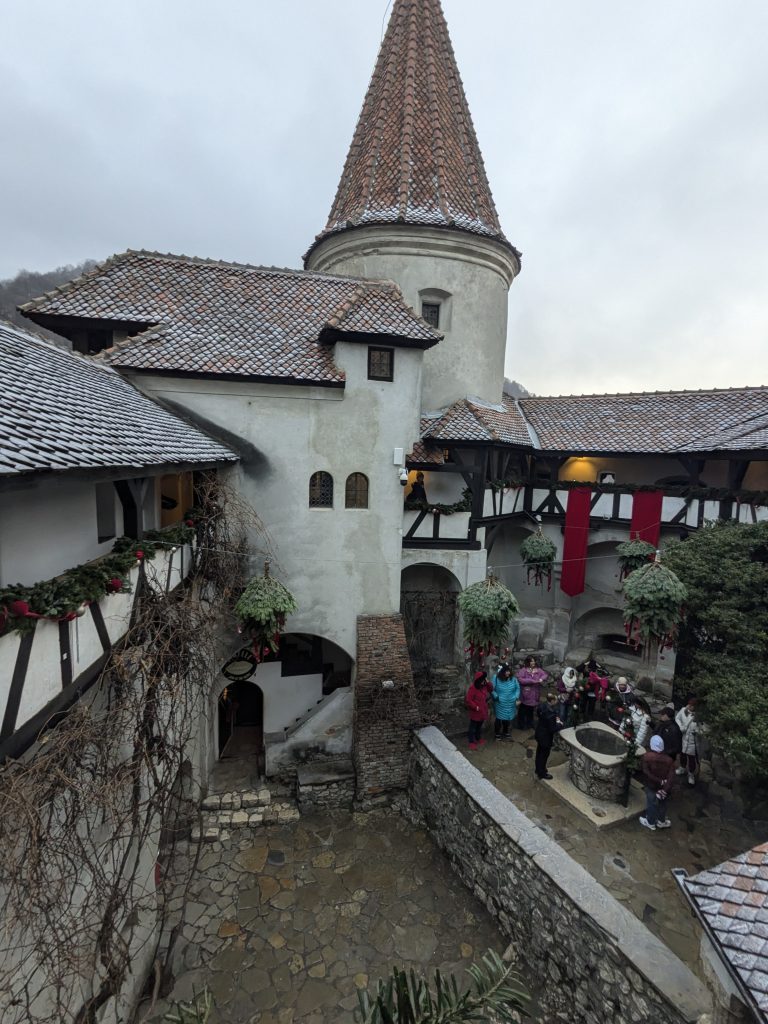
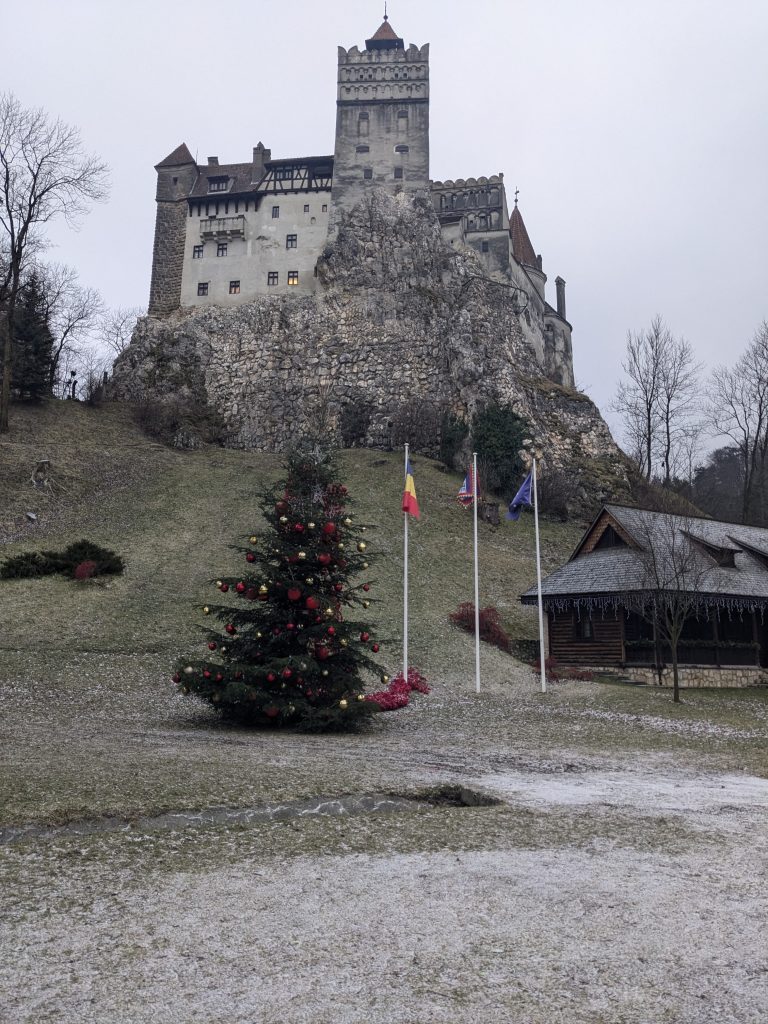
Back in Brasov, we had plenty of free time to explore the medieval city. I did a little museum hopping but only checked off a few. The Tales of Communism Museum was very enlightening. It was filled with vintage furniture and other objects but the real story was in the text displays on all the walls. Interviews with people who lived through this dark time revealed the difficulty in their day to day existence. It made me think about how in the 80’s we were starting careers building a house, traveling to Europe, driving 50miles round trip to work and just enjoying life. The Romanians were waiting in long lines to buy bread and milk.
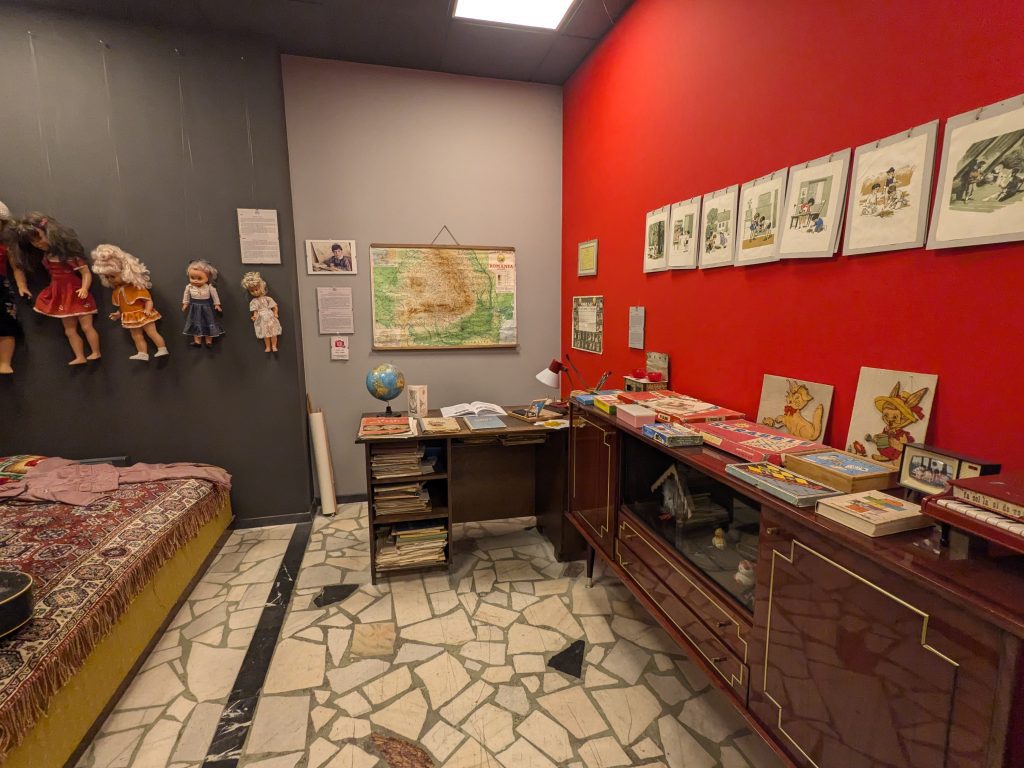
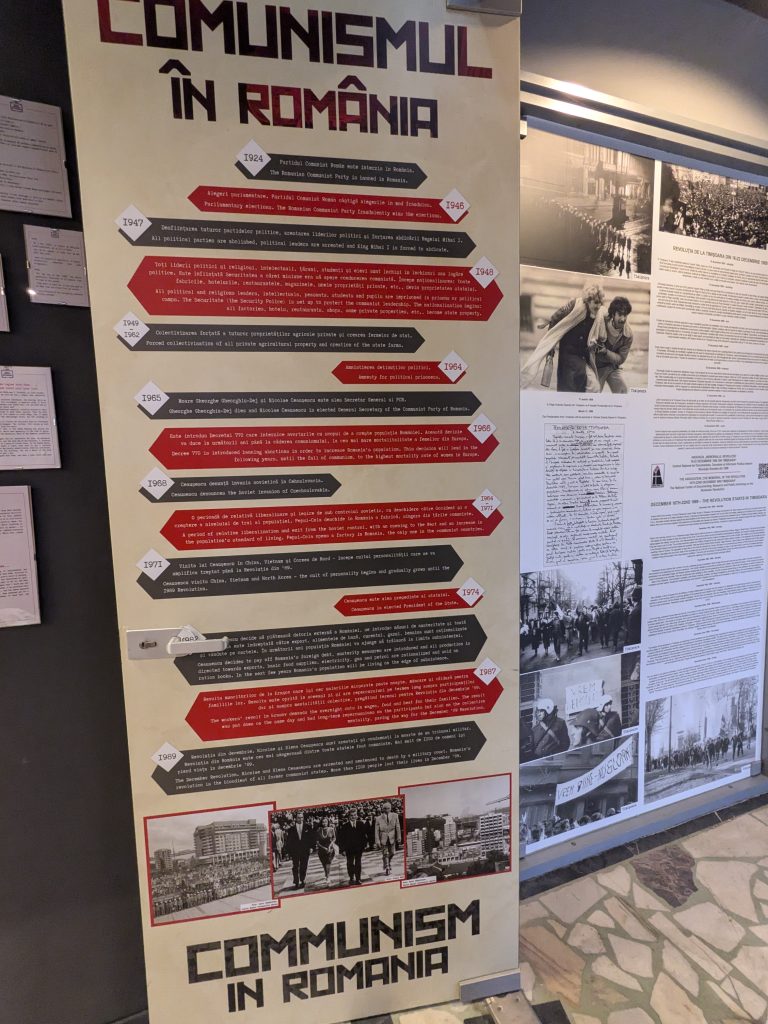
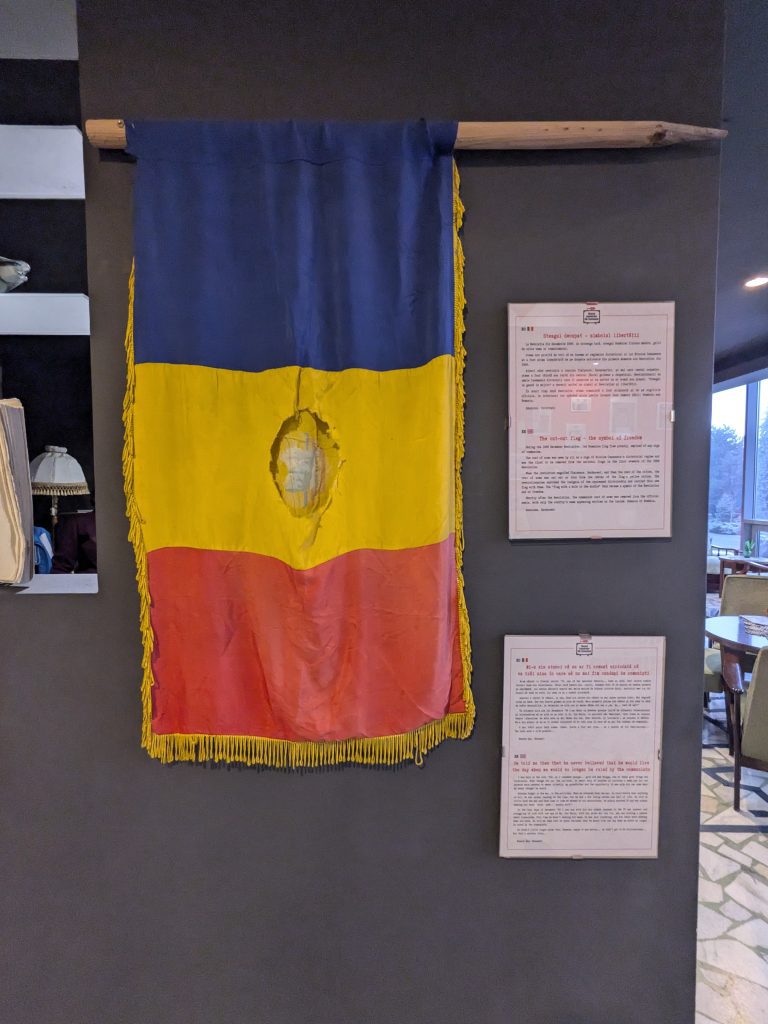
There is a history museum in the Council House. The first floor exhibits had English translations but the upper floors did not. I would give this museum a 6 out of 10 but at least it had a tiny bathroom tucked away on the second floor. The Council House faces the big square (Piata Sfatuli) where the Christmas markets were setup. I didn’t think they were any more interesting than the market in Sibiu.
The Black Church (Biserica Neagra) is listed as a must see sight in Brasov. It is a beautiful Gothic church built in the late 14th century. It is called the black church because it’s exterior walls were blackened in the fire of 1689. Inside it was very quiet and peaceful. The side pews are decorated with 16th to 19th century Anatolian (Turkish) rugs donated over the years by the church patrons. This church was a Roman Catholic church until the Protestant Reformation in 1542. It is an active Evangelical Lutheran parish now.
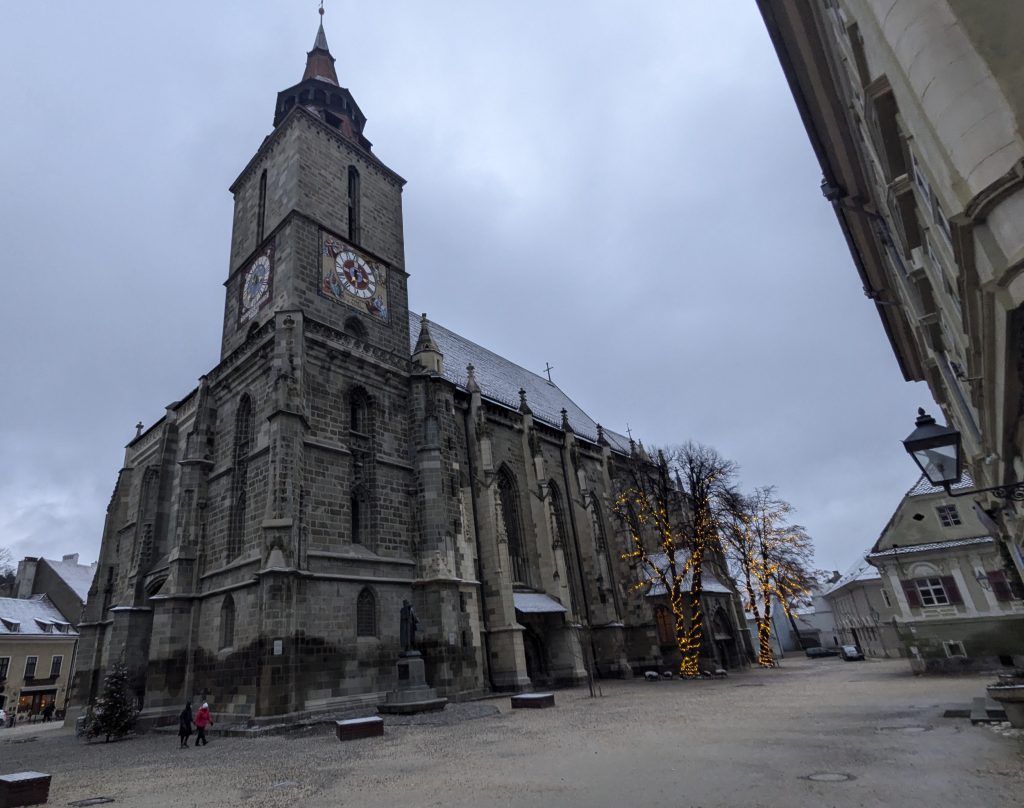
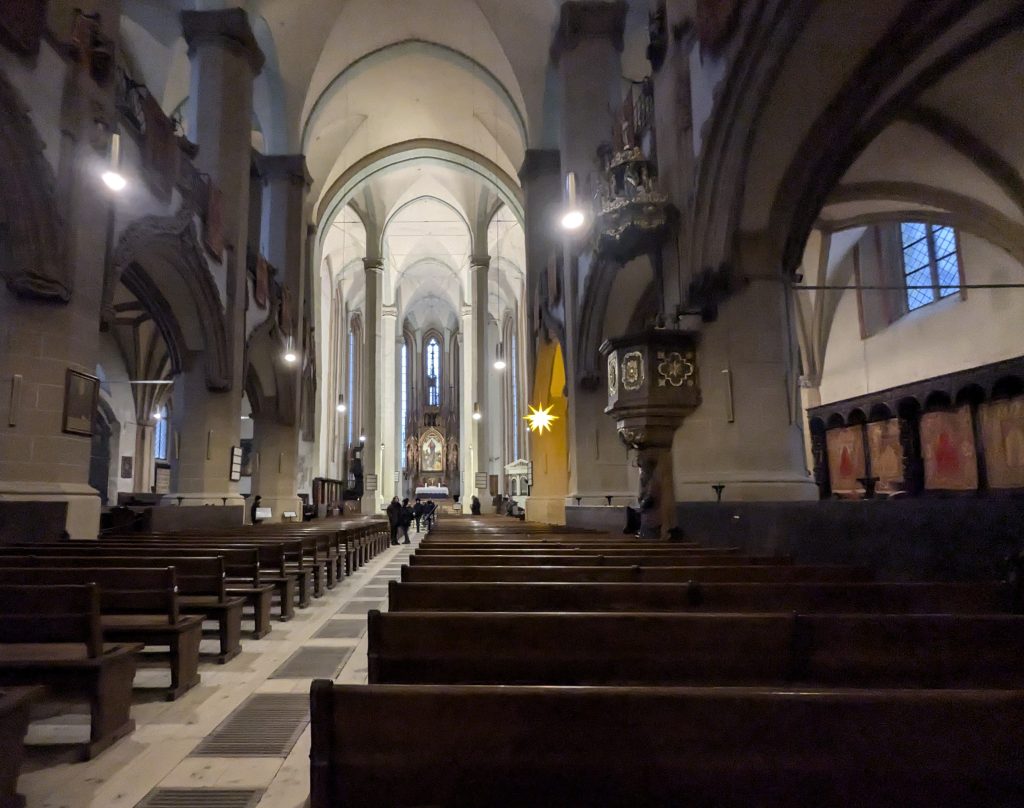
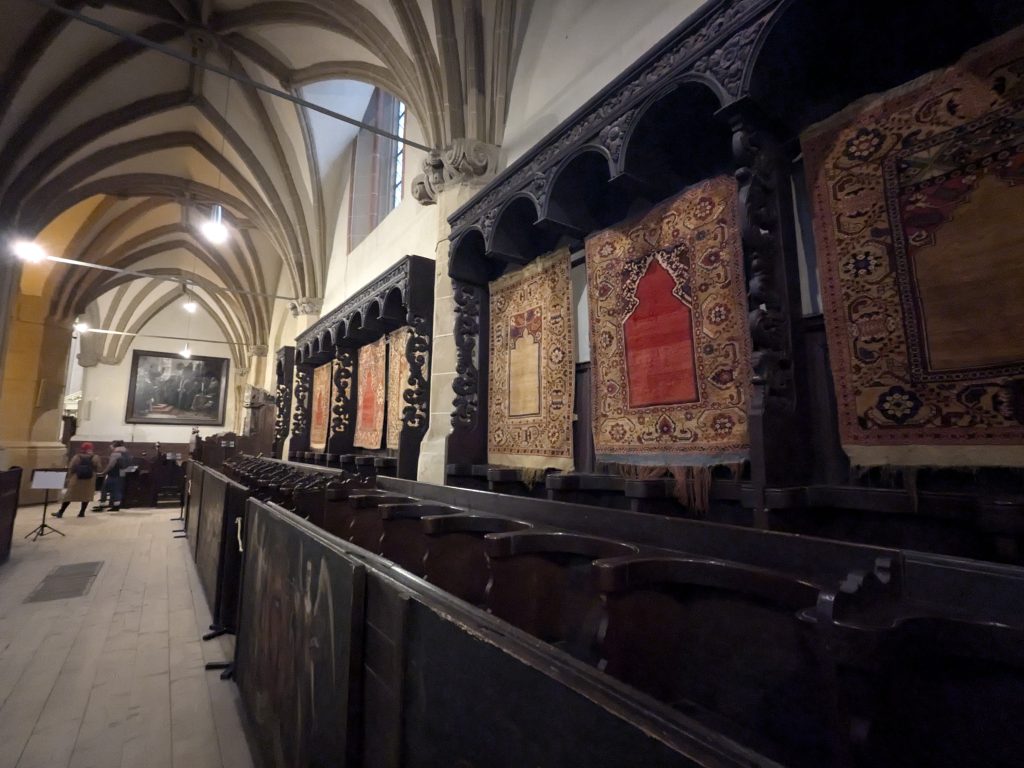
Before it got dark (which is quite early), I walked the streets to find several other sights – the Schei Gate which is a yellow arch where vehicles enter the city, Catherine’s Gate which was part of the medieval defense system and now sits lonely in a park, the historical pedestrian entrance to the Old City and Rope Street – a narrow lane that connects to streets of houses covered in grafitti.
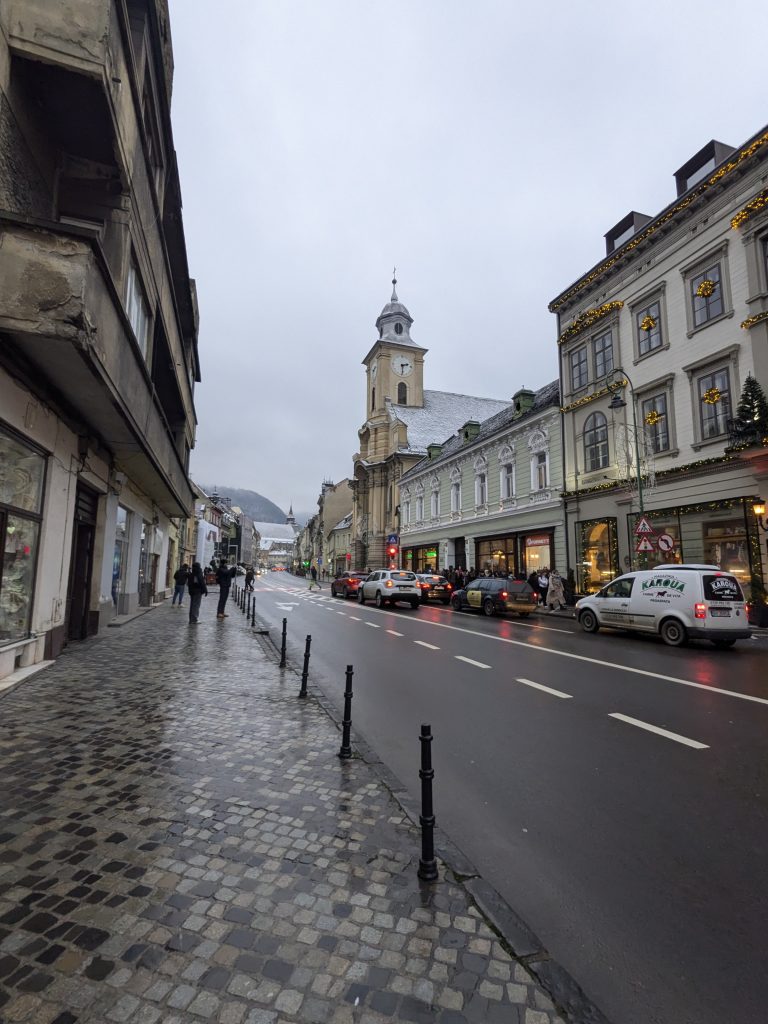
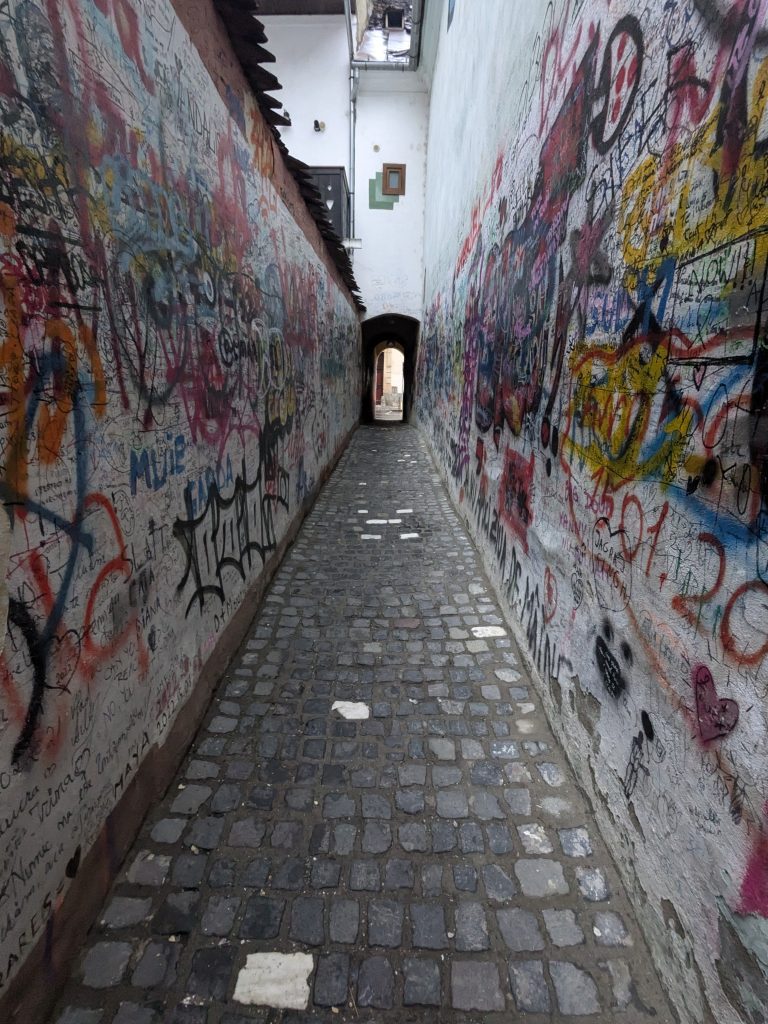
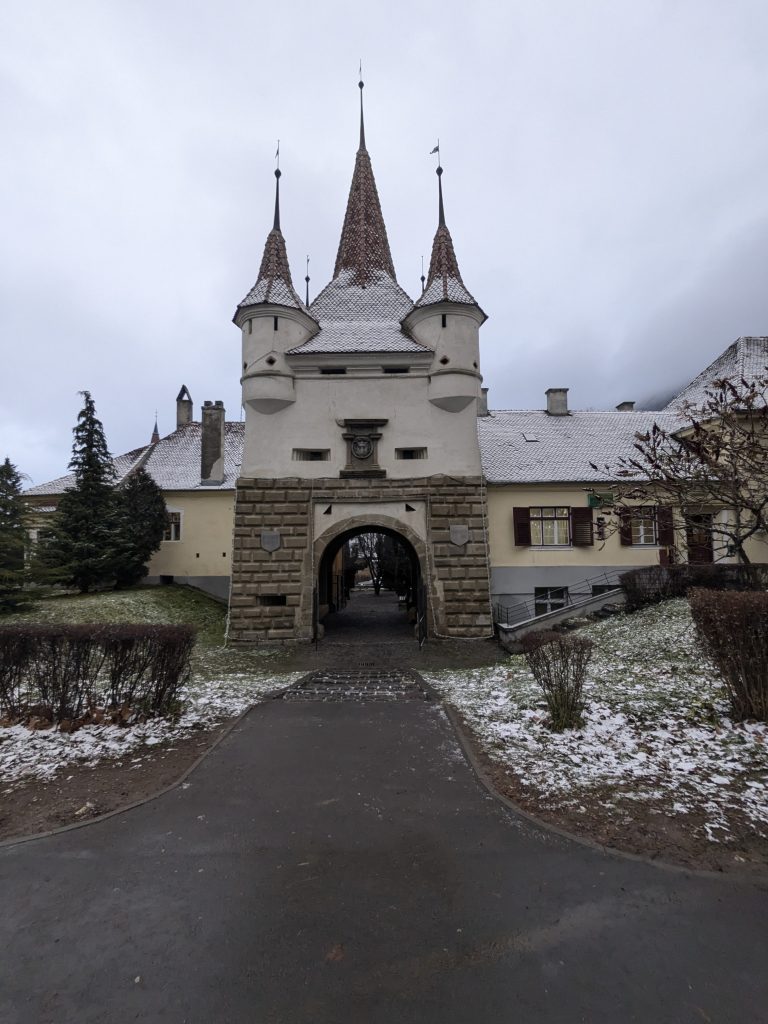
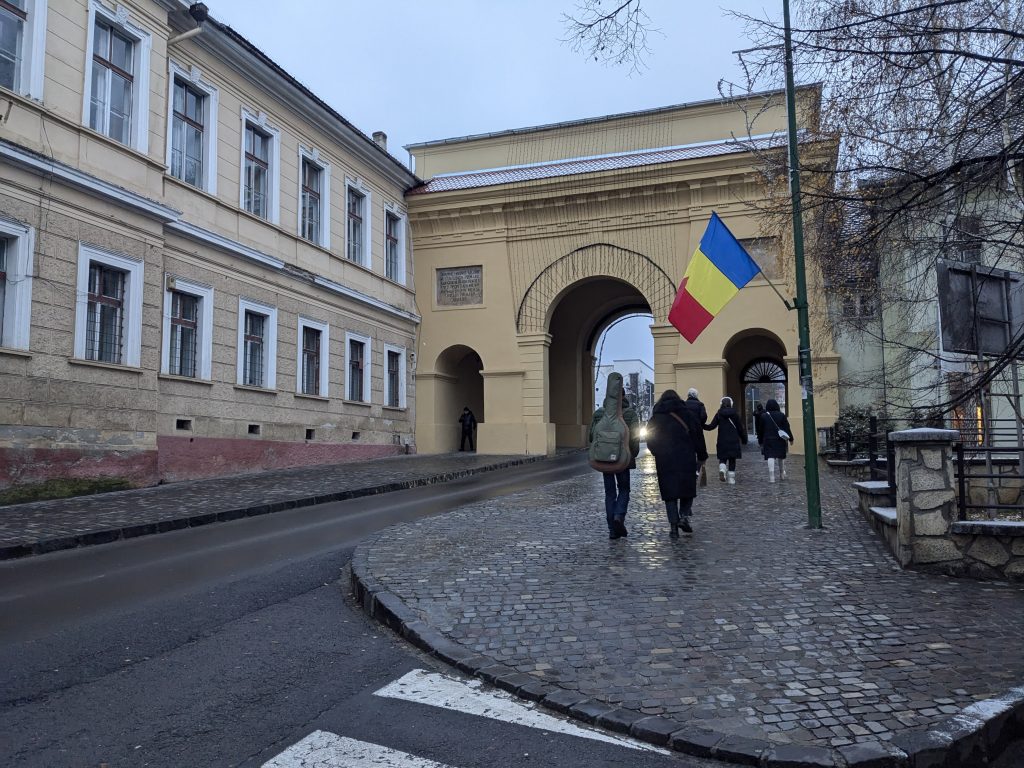
I finished up my Brasov day with some shopping at Gerovital, a cosmetic shop selling anit aging creams and lotions for very good price. Found a nice shop behind church where I picked up my coffee mug. And dinner was at La Ceaun – Piata Sfatului. After 12,000 steps that day, I limped home for an early night in my room.
